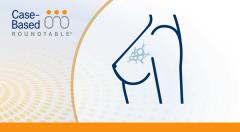
Oncotype DX Used for Patients With Breast Cancer to Guide Therapy
Fengting Yan, MD, PhD, discusses how her clinical practice is informed by data and guidelines available on testing in breast cancer.
Fengting Yan, MD, PhD, a medical oncologist at the Swedish Cancer Institute in Seattle, Washington, discusses how her clinical practice is informed by data and guidelines available on testing in breast cancer, including Oncotype DX.
The information in the TAILORx (NCT00310180) and RxPONDER (NCT01272037) trials, the NCCN guidelines, and the American Society of Clinical Oncology (ASCO) guidelines, can help decide whether the Oncotype DX, a 21-gene assay, is appropriate for patients. For example, Oncotype DX can be used to determine adjuvant chemotherapy for patients with premenopausal or postmenopausal breast cancer with negative lymph nodes, as well as postmenopausal patients with positive lymph nodes.
Yan appreciates the detailed information in both of the publications, which aids in personalized treatment decisions in patients with hormone-receptor–positive, HER2-negative breast cancer. She finds both publications, particularly the RxPONDER trial, to be valuable for daily clinical decision-making. Both trials looked at invasive disease-free survival with chemotherapy plus endocrine vs endocrine therapy alone to assess the role patients’ recurrence score played.
TRANSCRIPTION
0:10 | My practice is based on the TAILORx and RxPONDER clinical trials, NCCN guidelines, and ASCO guidelines. So in general, for either premenopausal or postmenopausal patients when they had negative lymph nodes, I definitely sent Oncotype to decide on adjuvant chemotherapy. For postmenopausal women with positive lymph node based on the RxPONDER, I also sent Oncotype to make decisions too.
0:40 | I greatly appreciate all the granular details in both publications. In most of my patients, I can certainly go back to the publication and help my patient with the decision making, especially in the past and based on the age group. There were different cutoffs. I think both TAILORx and RxPONDER clarified a lot of questions, so I appreciated the granular details, and I heavily rely on both publications to help make clinical decisions on a daily basis.










































